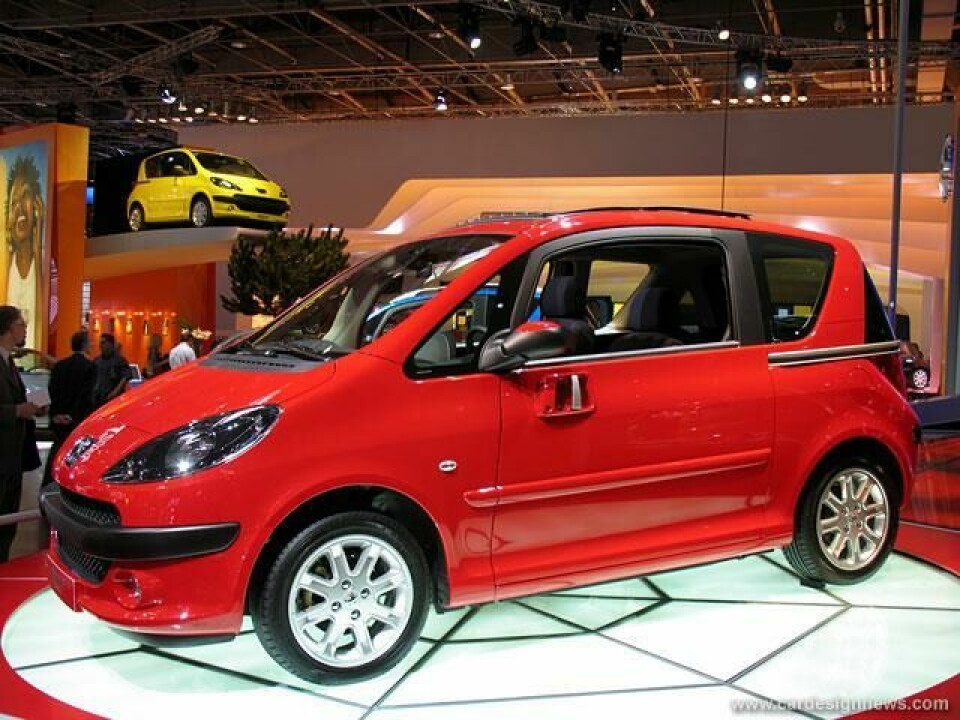
Design Review: Peugeot 1007
Throughout the history of the car it has been small cars that have most often demonstrated innovative design solutions, had attractive and characterful designs and gone on to become iconic products. Think Fiat Topolino, Volkswagen Beetle, Citroen 2CV, Fiat 500, Mini and even Renault 5, Fiat Panda, Peugeot 205, Ford Ka, Renault Twingo, Smart City Coupe/ForTwo and Citroen Pluriel.Peugeot’s new 1007













Throughout the history of the car it has been small cars that have most often demonstrated innovative design solutions, had attractive and characterful designs and gone on to become iconic products. Think Fiat Topolino, Volkswagen Beetle, Citroen 2CV, Fiat 500, Mini and even Renault 5, Fiat Panda, Peugeot 205, Ford Ka, Renault Twingo, Smart City Coupe/ForTwo and Citroen Pluriel.
Peugeot’s new 1007 has much of the ingredients to qualify it for inclusion in this list. Previewed by the Sesame concept car at Paris two years ago, the 1007 is the first European production car conceived around a conspicuous feature of two electric sliding doors or ‘Open-Sesame’ doors as Peugeot would have it. Based on the platform of the forthcoming 107 and the current Citroen C2, the 1007 architecture is dictated by its elevated height of 1610mm and large doors within a short 3730mm length.
The tall/short proportions are compounded by minimal plan shape, little tumblehome and a very thin body side section (witness the concave shoulder and entire door handle mechanism standing proud of the door surface)
Despite this ungainliness and new ‘double O’ niche status, Pininfarina, who designed the exterior, have grafted on the post-407 generic Peugeot corporate face.
Pull the door handle or press one of the remote key fob buttons and the doors slide rearward electrically leaving a large aperture with no obstructive open door in the way as one suddenly realises is the case with conventional doors. Once in you sit high up (although the high cowl doesn’t afford the low sightline of a Smart or even Twingo) and either a switch on the IP or interior door handle triggers the electric door close mechanism.
How much benefit these novel sliding doors provide is a moot point. They can be opened fully even when parked close to other cars in a car park and for those less agile they do afford marginally easier ingress egress than a conventional door (although not having an open door to lean on may negate this benefit for some). But the success of the 1007 does not hang solely on this defining feature. Its otherwise most innovative design feature, the Cameleo colour and trim concept, looks likely to have as much showroom appeal as its trick doors.
Cameleo is 12 different 18-piece colour and trim packages that include seat backs, seat cushions, facia mats, air vent bezels, door panel trims and rear side trims. Fitted without tools by the user in about ten minutes, these provide a wide choice of changeable interior trim.
A decade ago Renault designed the innovative and similarly compact Twingo around the needs of the young French urbanite, and were then surprised by how many older women bought this trendy little car. Peugeot seem to have designed a car that targets the older female market more directly with its easy access doors and multiple colour and trim options. But whilst it may have much of the ingredients of an iconic small car, and is one of the most innovative and interesting cars launched this year, the 1007 lacks the all important attractive and characterful design evident in the most successful small cars from Fiat, Citroen, Ford and Renault.
As a consequence the 1007 suffers an ungainliness that cars such as the original Mercedes A-class (with near identical length and height to the Peugeot) more successfully disguised, although at the rear the 1007 employs an A-class type design feature of inclined C-pillar and wrap around rear window and lamp graphic. |



